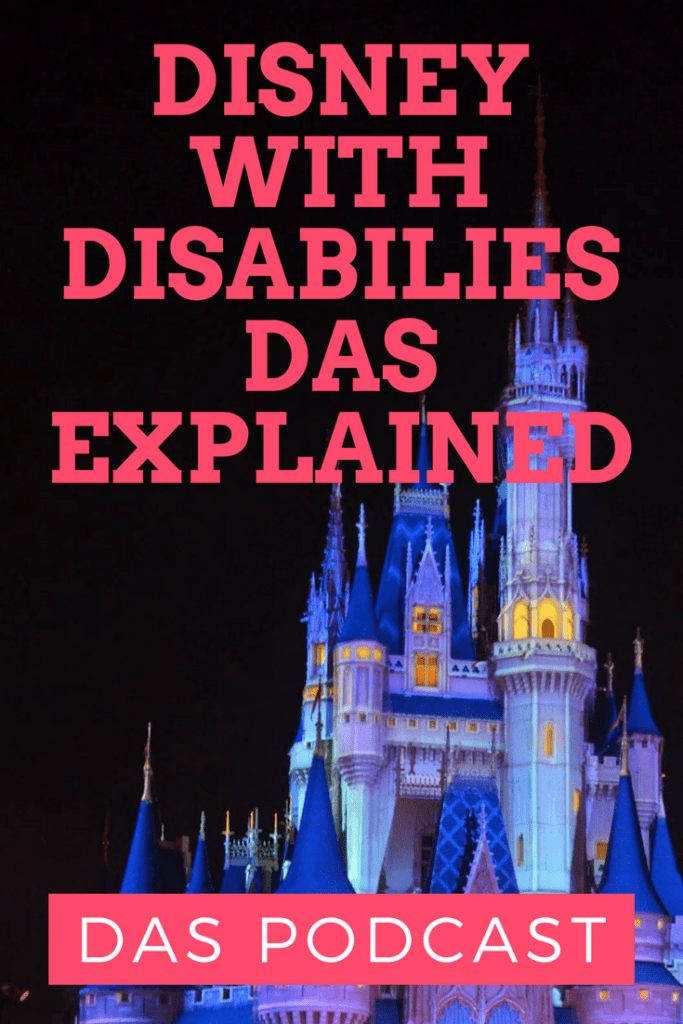Walt Disney World (Disability Access Service) DAS explained
How to vacation at Disney World when you need some extra help by using Disney’s disability access service.
We are with Adam who has experienced Walt Disney world with his sister. Adam’s sister needs some extra assistance. Adam covers Disney’s DAS system, how DAS is helpful for his family, and what you need to know about Disney’s DAS system.
We spoke with Admin on our Mouse Chat Podcast so you can learn all about DAS for yourself. Please listen to our full one-on-one Disney Disability Access Service discussion with Adam.
Free at Walt Disney World
Get our list of things you can get for free.
We have a long list of Disney World freebees. These are tips and free extras that we have gathered from our years of Disney World experience. And the list also Free and we will rush it to your in box!
Join us on Facebook, Twitter, YouTube, and Instagram.
Join Mouse Chat Facebook
Mouse Chat Instagram
Mouse Chat Twitter
Watch Mouse Chat YouTube
We would love to hear from you. Is there something you want to know about Mouse Chat? Please leave a comment.
Please join us by listening to our show at MouseChat.net or by downloading and subscribing to Mouse Chat on
iTunes. If you subscribe to our Disney Podcast on iTunes you can schedule it to update your player so you will never miss a show.




I listened to the podcast. The problem is that many people who have significant cognitive disabilities cannot wait period never mind just 10 minutes less than everyone else. And that assumes that when they return to the ride that the Fast pass lane won’t be busier than when they had to go to the queue and get a DAS return time. Adam is right– it takes a guide to do Disney for people who truly needed the other pass. The previous system was never meant to give instant access to the rides or cut lines. Before people caught on to the benefit to those with disabilities, people with disabilities who used that pass would generally go in the exit, and wait there until an attendant said that it was safe and okay to proceed. Often, that meant slowing a ride or even stopping it. The problem is that people who could wait– those in scooters, those in wheelchairs who have normal cognition, and those who faked a disability to cut lines at Disney, clogged up the exits and alternate exits so badly that Disney had to act.
Now, they have this new system which requires people who cannot wait to still wait and to take an extra step of getting another return time while in the park at each ride queue. Does that sound like a good idea to anyone? Adam is right– it should be part of the same system to secure fast passes. When these legitimately handicapped individuals get the DAS, they should be able to schedule the DAS times in conjunction with their Fast pass times at Guest Relations. Anything else is cumbersome and ruins the family’s day of being able to do Disney together without the stress of running from one queue to another to secure the DAS return times.
As for Guest Relations, Adam mentions the healthcare law as Disney’s excuse for not reading notes. That is laughable because our daughter had to explain her intimate details in a room of strangers with people staring and listening in. Is that not also a violation of the law? When I go to the doctor, he is not having a conversation about my medical history in the waiting room.
It is too bad that so many people ruined it for those who truly needed the accommodation. Those who truly do are a much smaller group than people imagine, but as with the handicapped parking spaces, people see something they want that someone else has and they are often willing to lie and cheat to get it.
I understand it had to change, and I am glad that those who fake a disability (the old ace bandage around the ankle and the soft boot cast that can be bought at CVS) no longer can take advantage of any benefit at the parks that is intended to help those who truly need it. However, the current system is discriminatory against the very people who need it because they have to take an extra step to get on a ride. It is a start, but it needs work.
Another issue my family experienced (my husband and daughter has a connective tissue disorder that makes standing for any length of time or walking long distances without a break very painful)… No benches! They had to stand for 10-20 minutes at each ride (even with the DAS). Transportation with the bus service was even worse. Long walk to the bus (limited places to rest), long line waiting for the bus (no bench) and often having to stand on the bus because of limited space. When I spoke with Disability Services – I was told benches were removed for safety reasons. NOT a magical experience.